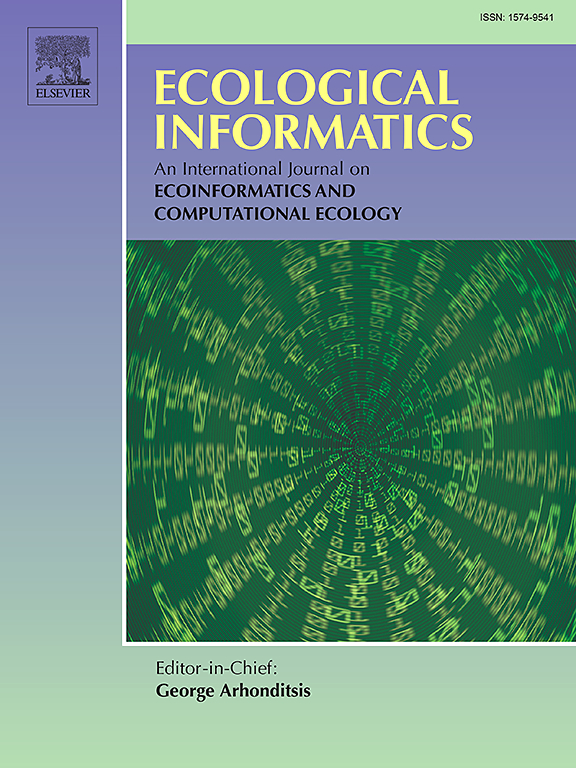Post-fire evapotranspiration estimates in ground truth limited environments
IF 7.3
2区 环境科学与生态学
Q1 ECOLOGY
引用次数: 0
Abstract
Wildfires are catastrophic events with increasing incidence and severity, especially in Mediterranean climates like California. Wildfires can drastically change the hydrologic components of a watershed and require consistent and reliable data to monitor recovery. With the upcoming retirement of the Moderate Resolution Imaging Spectroradiometer (MODIS), a reliable evapotranspiration (ET) product at the subcatchment scale is necessary to monitor longitudinal ET, particularly post-fire. We evaluate NASA JPL's ECOsystem Spaceborne Thermal Radiometer Experiment on Space Station (ECOSTRESS), MODIS, and the North American Land Data Assimilation System phase 2 (NLDAS-2) to assess performance in longitudinal evapotranspiration (ET) estimates and post-fire ET change detection using correlation analysis and linear regression for twelve subwatersheds located within the August Complex Fire (August 2020) in Trinity County, the Delta Fire (September 2018) in Shasta and Trinity Counties, and the Creek Fire (September 2020) in Fresno County for a four-year period. We found that MODIS and ECOSTRESS showed the strongest correlation in daily ET estimates (mean r = 0.56), while correlations between ECOSTRESS-NLDAS-2 (r = 0.06) and MODIS-NLDAS-2 (r = 0.30) were notably weaker. However, ECOSTRESS data availability constrained post-fire change detection and annual ET sum assessments. Its higher spatial resolution and correlation with MODIS have potential for finer-scale model parameterization of post-fire landcover changes, particularly vegetation loss in place of MODIS. NLDAS-2 can be useful in monthly and annual patterns at larger scales. By comparing ECOSTRESS with established platforms of ET estimation, we validate ECOSTRESS as a tool for post-fire ET monitoring, especially in areas where ground truth data is unavailable. These findings can allow for more informed and effective land management decisions, particularly in wildfire and vegetation monitoring.
火灾后地面真实有限环境下的蒸散估算
野火是一种灾难性事件,发病率和严重程度都在增加,尤其是在加利福尼亚这样的地中海气候地区。野火可以极大地改变流域的水文成分,需要一致和可靠的数据来监测恢复情况。随着中分辨率成像光谱仪(MODIS)的退役,一个可靠的流域尺度蒸散发(ET)产品是监测纵向ET的必要条件,特别是在火灾后。我们评估了NASA喷气推进实验室的生态系统星载空间站热辐射计实验(ECOSTRESS)、MODIS和北美陆地数据同化系统第2阶段(NLDAS-2),利用相关分析和线性回归评估了纵向蒸散发(ET)估算和火灾后ET变化检测的性能,这些数据来自位于三一县8月复合火灾(2020年8月)、沙斯塔县和三一县三角洲火灾(2018年9月)的12个子流域。以及弗雷斯诺县的克里克大火(2020年9月),为期四年。我们发现MODIS和ECOSTRESS在每日ET估算中表现出最强的相关性(平均r = 0.56),而ECOSTRESS- nldas -2 (r = 0.06)和MODIS- nldas -2 (r = 0.30)之间的相关性明显较弱。然而,ECOSTRESS数据的可用性限制了火灾后变化检测和年度ET总和评估。它具有较高的空间分辨率和与MODIS的相关性,有可能代替MODIS进行火灾后土地覆盖变化的精细尺度模型参数化,特别是植被损失。NLDAS-2在较大尺度上可用于月度和年度模式。通过将ECOSTRESS与现有的ET估计平台进行比较,我们验证了ECOSTRESS作为火灾后ET监测的工具,特别是在无法获得地面真实数据的地区。这些发现有助于做出更明智、更有效的土地管理决策,特别是在野火和植被监测方面。
本文章由计算机程序翻译,如有差异,请以英文原文为准。
求助全文
约1分钟内获得全文
求助全文
来源期刊

Ecological Informatics
环境科学-生态学
CiteScore
8.30
自引率
11.80%
发文量
346
审稿时长
46 days
期刊介绍:
The journal Ecological Informatics is devoted to the publication of high quality, peer-reviewed articles on all aspects of computational ecology, data science and biogeography. The scope of the journal takes into account the data-intensive nature of ecology, the growing capacity of information technology to access, harness and leverage complex data as well as the critical need for informing sustainable management in view of global environmental and climate change.
The nature of the journal is interdisciplinary at the crossover between ecology and informatics. It focuses on novel concepts and techniques for image- and genome-based monitoring and interpretation, sensor- and multimedia-based data acquisition, internet-based data archiving and sharing, data assimilation, modelling and prediction of ecological data.
 求助内容:
求助内容: 应助结果提醒方式:
应助结果提醒方式:


